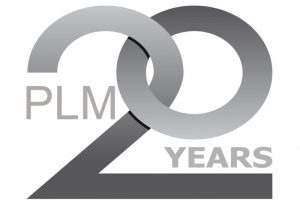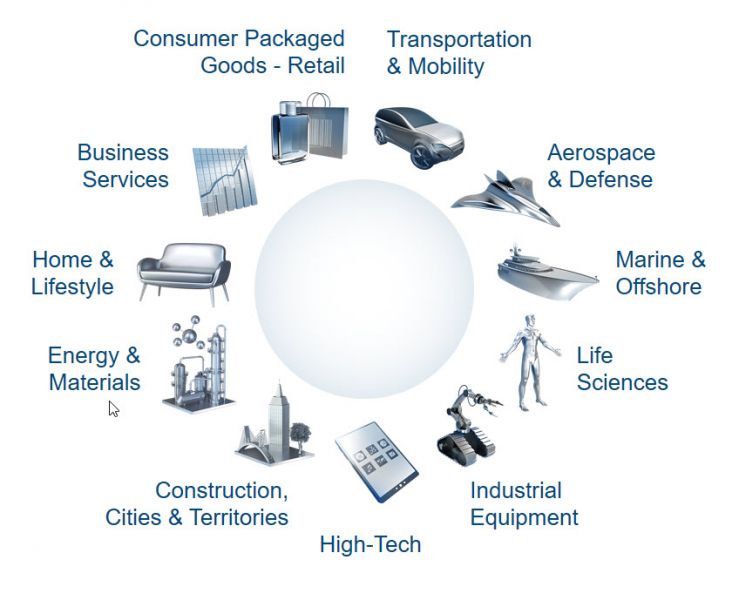 20 years is a long time in information technology. The term PLM has played an important role in industry digitalization for 20 years. During this time, managing product data centrally and increasingly using it throughout the entire lifecycle of products was, in a sense, considered the supreme discipline in the application of industry software.
20 years is a long time in information technology. The term PLM has played an important role in industry digitalization for 20 years. During this time, managing product data centrally and increasingly using it throughout the entire lifecycle of products was, in a sense, considered the supreme discipline in the application of industry software.
Now, other terms and approaches such as AI, data lakes and the Internet of Things (IoT) are increasingly coming to the fore. The series “20 years of PLM – Where are the IT and service providers today” explores the question of what role product lifecycle management plays today. Possibly also as a basis for all the other approaches to digital transformation. In this article, we look at Dassault Systèmes. A conversation with Dr. Darko Sucic, Senior Director, Industry Consulting in Central Europe at Dassault Systèmes.
Ulrich Sendler: What role does PLM play for Dassault Systèmes today as part of its portfolio of offerings?
 Dr. Darko Sucic: Still a very important one, because in our 3DEXPERIENCE platform everything revolves around the complete product description. This now involves mechanical, hydraulic, electrical, electronic and software data, because products have become systems, and that is exactly how our description of products, and their management has expanded throughout the entire lifecycle. PLM is still the basic element of our platform today.
Dr. Darko Sucic: Still a very important one, because in our 3DEXPERIENCE platform everything revolves around the complete product description. This now involves mechanical, hydraulic, electrical, electronic and software data, because products have become systems, and that is exactly how our description of products, and their management has expanded throughout the entire lifecycle. PLM is still the basic element of our platform today.
Sendler: So why is it no longer at the center of Dassault Systèmes’ homepage?
Dr. Sucic: From a marketing perspective, it seems that PLM is considered a done deal by many customers. However, I believe that many who talk about the future topics of digitalization forget that a functioning PLM is a central prerequisite for this. Some talk about digitalization, but still have their bill of materials as an Excel spreadsheet. Now they want to look at the products with 3D glasses. An Excel spreadsheet won’t get you very far. If a company doesn’t have a digital model consisting of a bill of materials and 3D components, including electrics, electronics and software, then further digitalization will be difficult. Particularly in the case of many medium-sized companies, with fewer than 500 employees and privately managed, we see that they have not yet taken the step toward PLM as a prerequisite for everything else. They urgently need to make up for this now if they want to have a say in the upcoming developments and position themselves globally.
Sendler: What role does PLM play regarding the digital twin and new business models?
 Dr. Sucic: PLM is no longer just for data management. It provides the data of all departments for the digital twin, which then also enables dynamic simulation of the function of a product in its use. And this is becoming increasingly important. The customer no longer buys a product according to the data sheet. Before buying, he wants to see how it works, what it can do, and what he can do with it. The experience of using a product is crucial, so it’s enormously important to be able to show that already on the virtual product. In our view, this ability is what makes a digital twin. This is just as true for consumer goods manufacturers as it is for mechanical engineering. Without PLM and without a digital twin, there is no new business model such as Equipment as a Service, as more and more companies are striving for.
Dr. Sucic: PLM is no longer just for data management. It provides the data of all departments for the digital twin, which then also enables dynamic simulation of the function of a product in its use. And this is becoming increasingly important. The customer no longer buys a product according to the data sheet. Before buying, he wants to see how it works, what it can do, and what he can do with it. The experience of using a product is crucial, so it’s enormously important to be able to show that already on the virtual product. In our view, this ability is what makes a digital twin. This is just as true for consumer goods manufacturers as it is for mechanical engineering. Without PLM and without a digital twin, there is no new business model such as Equipment as a Service, as more and more companies are striving for.
Sendler: Is PLM losing importance due to the growing use of so-called data lakes? Can these data lakes replace PLM or parts of it?
Dr. Sucic: Data Lakes are a useful addition to the Internet of Things. For example, you don’t collect operating data of a machine in a PLM system. PLM needs to know which parts of a machine can provide which data, but the mass of operational data does not belong in that system. PLM is a planning system. What then happens in the real world is more something for a data lake.
Sendler: In which application areas does Dassault Systèmes see its strategic focus for offering standard software?
Dr. Sucic: There are three areas of focus: The first remains the manufacturing industry. But we are now – this is the second area – increasingly going where the products are used. Especially with the acquisition of Medidata, for example, into medical technology and clinical research. Our ambition is to one day be able to simulate the human body just as well as any mechatronic product today. The third area is cities, where people use all kinds of products every day. With autonomous vehicles, for example, it’s not just about the vehicle, but also about the environment and the street, about passersby and objects. It must be possible to simulate the vehicle and its behavior in this real environment. Incidentally, we have now also structured our company accordingly, according to the areas of products that people manufacture, people themselves and the environment in which they live and use the products.

Smart City: the place where people use a wide variety of products
Sendler: What is Dassault Systèmes’ strategy regarding Software as a Service?
 Dr. Sucic: Our strategic decision was made long ago in favor of Software as a Service. We now have ten years of experience, and more and more customers are opting for the solution from the cloud. This is particularly true for start-ups, and much more so in the USA and China than in Europe. We would like to be further along, but the business model is only being adopted very slowly by the industry. This is even more true in Germany than in France, for example. Our competitors are also making the switch to subscription, but the picture is the same everywhere. We want to give our customers the time they need.
Dr. Sucic: Our strategic decision was made long ago in favor of Software as a Service. We now have ten years of experience, and more and more customers are opting for the solution from the cloud. This is particularly true for start-ups, and much more so in the USA and China than in Europe. We would like to be further along, but the business model is only being adopted very slowly by the industry. This is even more true in Germany than in France, for example. Our competitors are also making the switch to subscription, but the picture is the same everywhere. We want to give our customers the time they need.
Picture: The manufacturing industry remains a key focus for Dassault Systèmes
Sendler: How important is consulting for Dassault Systèmes compared to software sales?
Dr. Sucic: We want to continue to expand our partner network and support partners in strengthening consulting and possibly offering their own products on our platform. Again, this is particularly important for the start-ups among our customers. There, the money is not available for large IT investments, and fast solutions from partners based on our platform fit in very well there. We have also concluded agreements with our partners that focus on the coupling of ERP and PLM in the cloud on our platform. CENIT, for example, offers their connector with the 3DEXPERIENCE platform on SAP’s price list. Dassault Systèmes itself still has its focus on software sales, and by the way, the many, many small installations of SolidWorks play a considerable role in that.
Sendler: What are the most important target markets?
Dr. Sucic: Like most of our customers, we are globally positioned. Dassault Systèmes itself was transformed from a French company into a European one years ago. Our development labs are all over the world. In Germany alone, there are over a thousand developers in different areas. Our sales are highest in the U.S., if we disregard the automotive industry, which still plays a very large role in Germany. But in the U.S., for example, Google and Amazon are our customers, also the military sector and aviation, Lockheed Martin, and others. The industries depicted that were addressed when the 3DEXPERIENCE platform was founded a good ten years ago are still the important industries for us. In terms of company size, we have divided our organization into three areas. Partners like Bechtle cover the largest area of small and medium-sized enterprises. This is our volume area. The second consists of the partners who support the medium-sized and larger companies, our value-added resellers. And the third area is our own direct sales for the key accounts.
Sendler: What kind of IT provider would you describe Dassault Systèmes as today?
Dr. Sucic: We are, of course, still an industry software provider. Sustainability and innovation in industry cannot be achieved without the digital twin. But today we offer virtual worlds in really all areas. We want to model everything that is experienced in the real world in the virtual one and make it possible to experience it virtually. And in doing so, we will hopefully also contribute to making the world outside of industry more sustainable.

